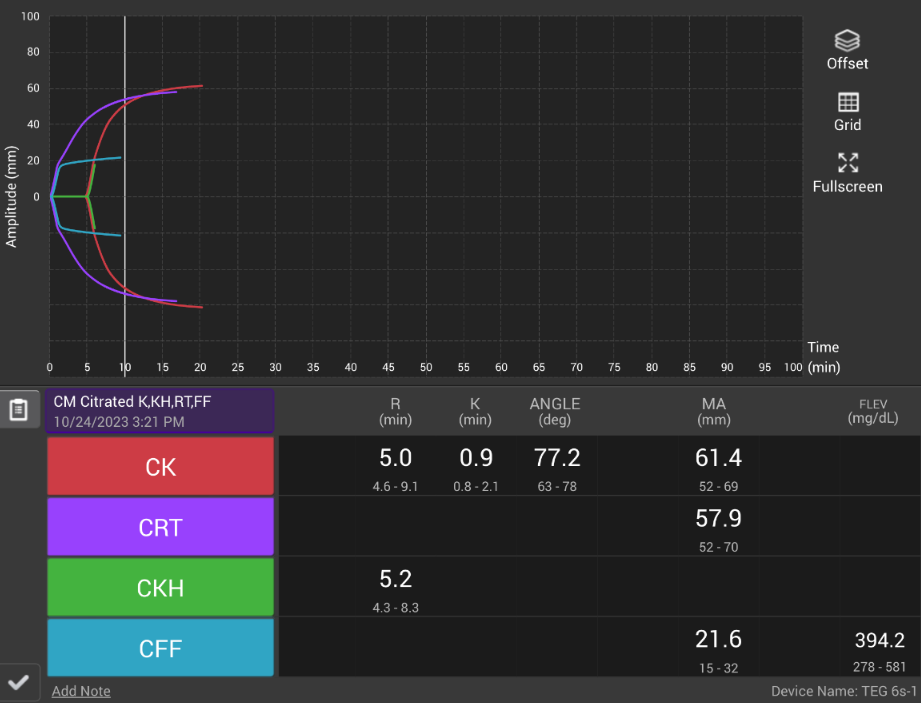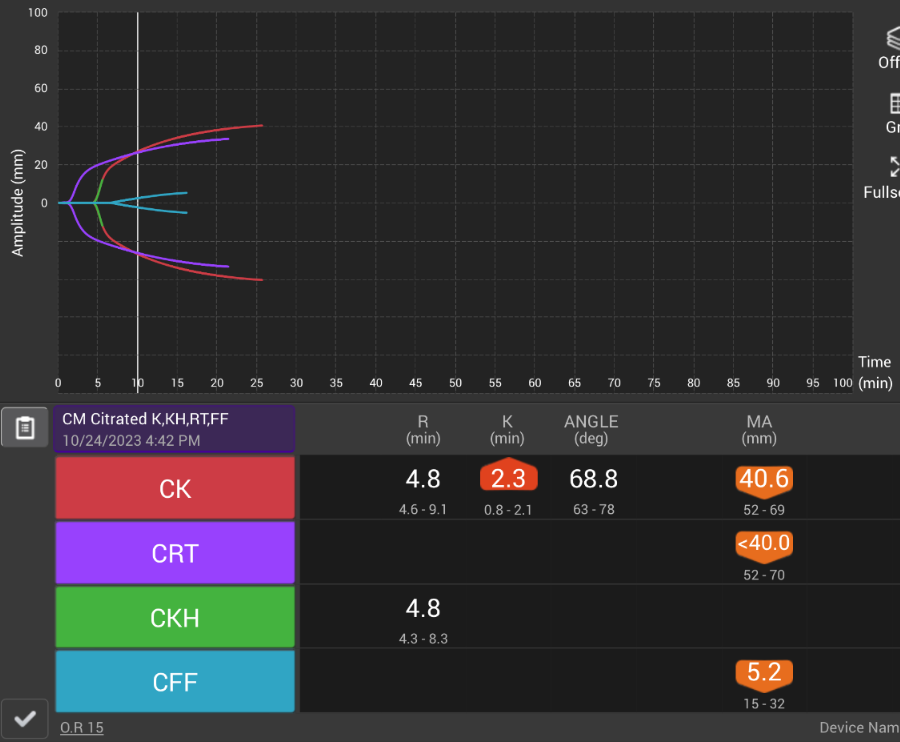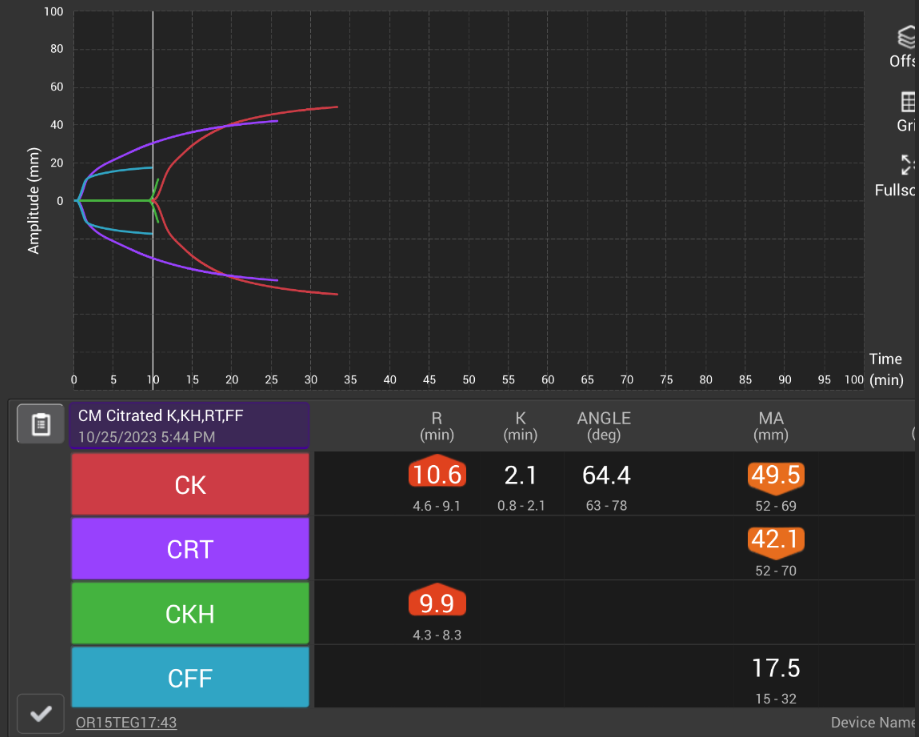A Comprehensive Analysis of Coagulation Dynamics and Clinical Applications
John Bellamente, MD
Published January 23, 2025 | Clinics in Medical Education
Issue 5 | Volume 1 | January 2025
A 51-year-old man with non alcoholic steatohepatitis (NASH) cirrhosis with history of right axillary/subclavian/internal jugular vein thrombus. A TEG was run preoperatively and is shown below. Based on the TEG results, should this patient recieve any products?

As the case continues, the patient has received multiple pRBC and plasma transfusions. A TEG is repeated and shown below. Now what products should be given?

Later on – after reperfusion, the patient is having ongoing coagulopathic oozing.
Is there any other tests we could run?

The patient continues to experience oozing despite the TEG values being near normal. This is indicative of thrombolysis. In this scenario, it is recommended to perform a TEG with lysis.
What is Thromboelastography (TEG)?
Traditional coagulation tests do not show the mechanical properties of clot over time because PT and PTT both terminate at low thrombin levels and before fibrin is polymerized. TEG provides a comprehensive view of a hemostatic profile, assessing the hemostatic potential of whole blood, as compared to a traditional coagulation monitoring. TEG measures viscoelasticity of whole blood from initiation of fibrin formation to maximal platelet clot strength and through fibrinolysis.
Which parameters are used to measure clot strength?
TEG measures clot strength over time, focusing on:
- Clot rate (R, in mins) – time it takes for first measurable clot to form.
- Clot strength (max. amplitude MA, in mm) – Strength of the clot.
- Clot stability (lysis LY30, in %): breakdown of the clot.
Graphical tracing and numerical results are reported for each measurement and results are highlighted orange if they fall outside the reference range.
Citrated Kaolin (CK): An intrinsic pathway activated assay identifies underlying hemostatic characteristics and risk of bleeding or thrombosis.
Citrated Kaolin with Heparinase (CKH): Eliminates the effect of heparin in the test sample and used in conjunction with Kaolin assessed the presence of systemic heparin.
Citrated Rapid TEG (CRT): An intrinsic and extrinsic pathway activated assay speeds the coagulation properties.
Citrated Functional Fibrinogen (CFF): Used in conjunction with Kaolin or RapidTEG can assess relative contribution of platelets and fibrin to overall clot strength.


